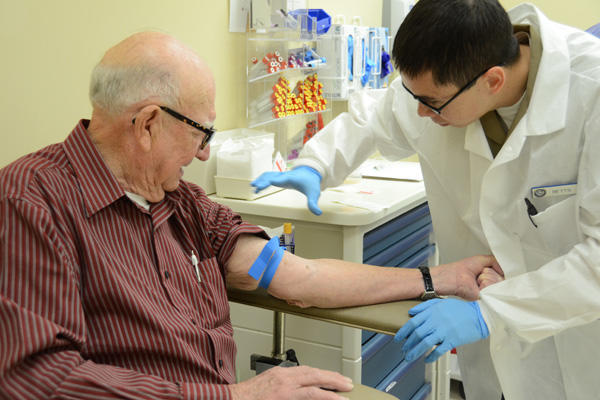The Department of Veterans Affairs has made some improvements in serving veterans through the Veterans Choice Program but still has work to do, Veterans of Foreign Wars National Commander John W. Stroud said on Monday.
Stroud's comment was included with the release of the VFW's latest survey on the choice program, which found that veteran awareness of the program is growing.
VFW Senior Legislative Associate Carlos Fuentes said the number of veterans eligible for the program grew after the VA modified how it determines the required 40-mile distance between a veteran's residence and a VA facility.
Originally, it was measured "as the crow flies" – a straight line that did not take into consideration how far a veteran actually would have to drive to reach a VA facility. These "40-milers" in remote or rural areas may have to drive a greater distance to reach a facility that, on a map, is much closer.
That change, expected to make an additional 300,000 veterans eligible for the Choice Program, was announced on March 24 and went into effect on April 24. The latest survey covered the period Feb. 6 to April 6.
"I think it would be higher now because a lot of the 40-miler folks who thought they were not eligible [because of the earlier rule] would be now," Fuentes said.
The survey findings are based on 2,155 responses to a VFW survey of members as well as an apportionment of more than 5,000 direct phone and e-mail contacts with VFW national offices.
Fuentes said the VA did not have a great deal of time to implement the program, and also has been making changes along the way. That means training and then retraining its personnel.
"VA has been required to make adjustments as they go – driving the train while fixing it," he told Military.com. "Overall, we feel that VA leadership is committed to fixing the problems. VA must continue to identify challenges and address them in a timely manner. However, a problem that was caused by years of chronic underfunding and mismanagement will not be fixed in seven months."
Among the problem areas that must still be addressed is how the VA calculates wait times for veterans to be eligible for the program, Stroud said in the survey report.
Now, a veteran must be on a wait list at least 30 days beyond when an appointment is deemed clinically necessary before being considered eligible for the Veterans Choice Program, according to Stroud.
That standard does not line up with reality, he said.
"If a doctor says a veteran needs to receive an MRI within a week to evaluate the veteran's chest pain, then that veteran must receive an MRI within a week, regardless of whether the care is received through a VA medical facility or through the Veterans Choice Program," he said.
For example, 45 percent of the 877 survey participants who tried to get an appointment after Choice went into effect on Nov. 5, 2014, reported waiting more than 30 days for an appointment. The figure was lower in the VFW's first survey, released March 3, when 35 percent of 746 veterans surveyed waited longer than 30 days.
The organization also found that many veterans still report dealing with VA customer service representatives who are unable to clearly explain the program. VA has to improve communications with veterans, the VFW said.
"VA must provide frontline personnel standardized training and implement quality assurance mechanisms to ensure its medical facilities adhere to training objectives, system wide directives, and clinical practice guidelines," it said.
The organization also recommends:
- That the VA must collect and disseminate best practices to enable seamless implementation of the Veterans Choice Program;
- An automated process for notifying "30-dayers" of their eligibility for the Choice Program.
- An adjustment of the wait time standard to appropriately account for clinical need, acuity of care, type of specialty, and how veterans perceive wait times;
- Modifying wait time eligibility under the Choice Program to permit veterans to receive non-VA care if care cannot be provided at a VA medical facility within the clinically indicated date.
- Expanding choice program eligibility to give veterans the opportunity to receive health care in their communities if their local VA medical facility or system does not offer the care they need.
- That the proposed Medical Appointment Scheduling System includes a compliance facet to ensure schedulers cannot set up or use prohibited scheduling practices, as was done at the Phoenix VA Medical Center and other VA facilities;
- Evaluating the choice program's 40-mile rule to make sure it accounts for population density-based differences veterans face when traveling to VA medical facilities;
- That all non-VA care authorities be used when the VA cannot readily provide care due to lack of available specialists, long wait times, or geographic inaccessibility;
- Appropriately and professionally staffing Non-VA Care Coordination teams at all VA facilities with personnel capable of handling the influx of work;
- That the VA remain the guarantor and coordinator of health care for all veterans enrolled in the system;
- Ensuring that the care veterans receive from non-VA providers meets VA and industry quality and safety standards;
- That Congress and the VA consult with veterans' service organizations and other interested parties to determine how to incorporate best practices into a single, system wide, non-VA care program.
-- Bryant Jordan can be reached at bryant.jordan@military.com


























